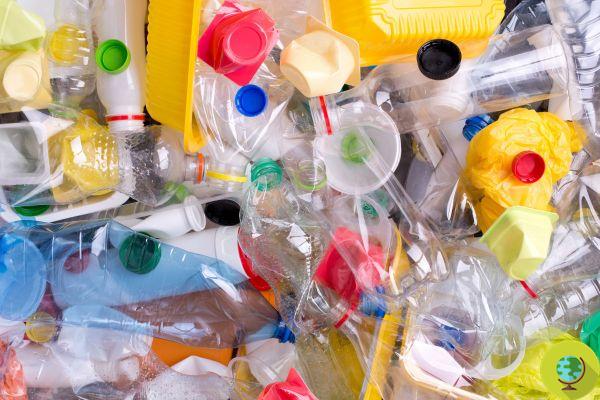
The Conference of the Parties to the Stockholm Convention in these days will consider whether to ban UV-328, a toxic plastic additive
Don't store avocado like this: it's dangerousThe seventeenth meeting of the Persistent Organic Pollutants Review Committee (POPRC.17), the Persistent Organic Pollutants Review Committee, is taking place these days and we will discuss, among other things, a toxic additive present in plastics. We are talking about UV-328 which will have to be considered whether to ban or not.
The Committee has met since yesterday, January 24 (and until 28), in Geneva in Switzerland. Among the planned commitments there is also that of examining one draft risk profiles of UV-328 which, as recalled in a press release:
It is a ubiquitous additive high volume typically used as an ultraviolet (UV) stabilizer in plastic products such as some personal care products, rubber and coatings. UV-328 is found in the environment and biota, even in remote areas such as the Arctic and Pacific Ocean, far from its production and use. It has been found that UV-328 is carried and can subsequently be released by plastic debris, which is absorbed by seabirds for example with subsequent accumulation in their tissues and microplastics. In humans, UV-328 has been detected in breast milk.
On January 16, another meeting of the Committee concluded that UV-328 meets all the criteria set out in Annex D of the Stockholm Convention on Persistent Organic Pollutants (POPs), namely:
- persistence
- bioaccumulate
- long-range environmental transport potential
- negative effects for humans and / or the environment
Having ascertained this, we have now moved on to the next phase of the revision by the Conference of the Parties (COP) of the Stockholm Convention, a global treaty that entered into force in 2004 which requires measures to be taken to eliminate or at least reduce the release of persistent organic pollutants (Pop ) in the environment.
The Conference, held in these days, will then be able to decide whether to envisage actions aimed at eliminating or reducing this additive from production and use, as well as the destruction of existing stocks and the management of POP waste.
Other controversial substances will also be discussed including the methosichlor, a pesticide indicted for causing damage to health and due to its long-range environmental transport; and the declorano more, a flame retardant due to its persistence, bioaccumulation and long-range environmental transport potential.
Follow your Telegram | Instagram | Facebook | TikTok | Youtube
Fonte: Stockholm convention
Read also:
- Plastic is a bigger threat than expected: it is spreading toxic and polluting chemical additives
- Echa adds Bisphenol B, paraffins and sodium salt to the list of substances of very high concern
- Not just bisphenol and phthalates: plastic contains 140 harmful substances and is a threat to human health


























